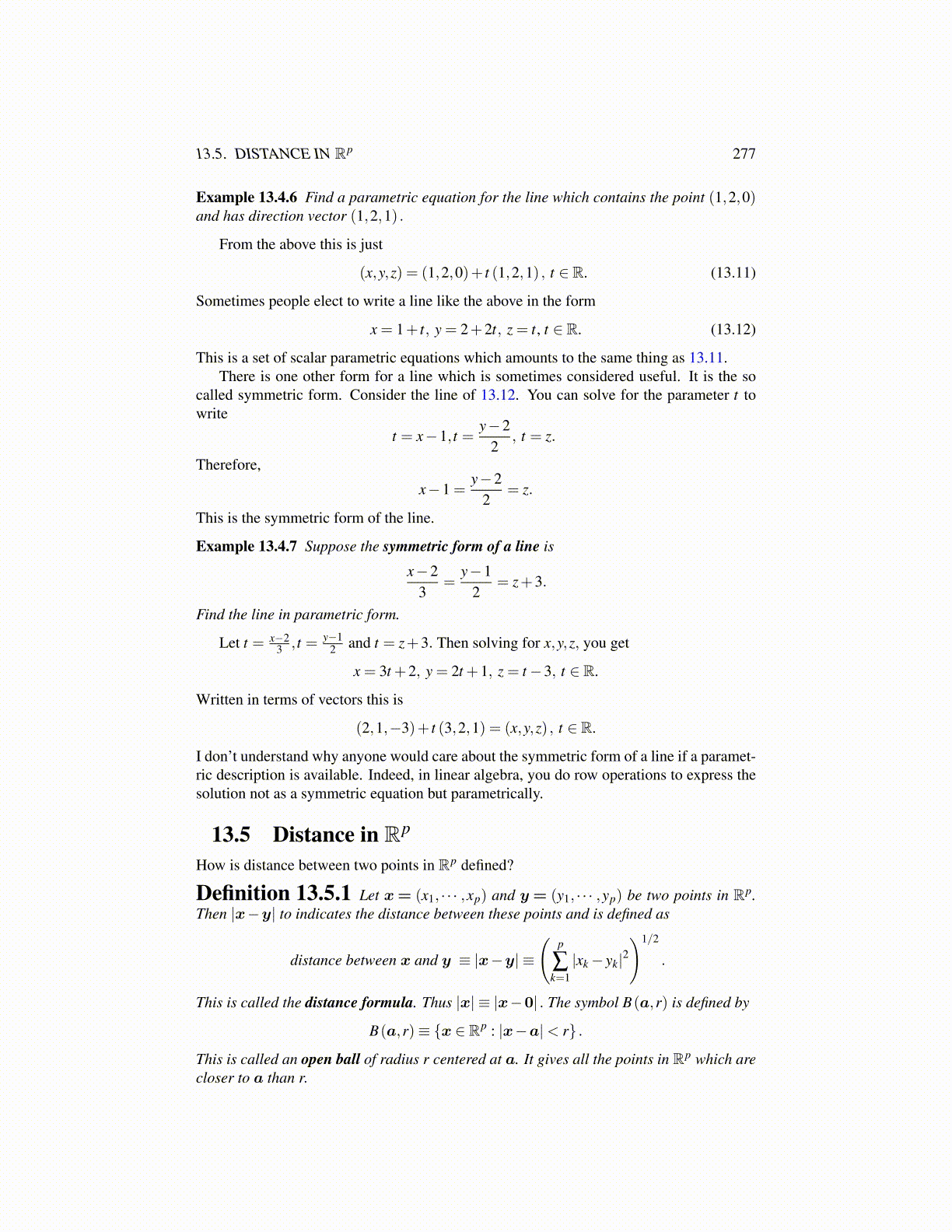
13.5. DISTANCE IN Rp 277
Example 13.4.6 Find a parametric equation for the line which contains the point (1,2,0)and has direction vector (1,2,1) .
From the above this is just
(x,y,z) = (1,2,0)+ t (1,2,1) , t ∈ R. (13.11)
Sometimes people elect to write a line like the above in the form
x = 1+ t, y = 2+2t, z = t, t ∈ R. (13.12)
This is a set of scalar parametric equations which amounts to the same thing as 13.11.There is one other form for a line which is sometimes considered useful. It is the so
called symmetric form. Consider the line of 13.12. You can solve for the parameter t towrite
t = x−1, t =y−2
2, t = z.
Therefore,
x−1 =y−2
2= z.
This is the symmetric form of the line.
Example 13.4.7 Suppose the symmetric form of a line is
x−23
=y−1
2= z+3.
Find the line in parametric form.
Let t = x−23 , t = y−1
2 and t = z+3. Then solving for x,y,z, you get
x = 3t +2, y = 2t +1, z = t −3, t ∈ R.
Written in terms of vectors this is
(2,1,−3)+ t (3,2,1) = (x,y,z) , t ∈ R.
I don’t understand why anyone would care about the symmetric form of a line if a paramet-ric description is available. Indeed, in linear algebra, you do row operations to express thesolution not as a symmetric equation but parametrically.
13.5 Distance in Rp
How is distance between two points in Rp defined?
Definition 13.5.1 Let x= (x1, · · · ,xp) and y = (y1, · · · ,yp) be two points in Rp.Then |x−y| to indicates the distance between these points and is defined as
distance between x and y ≡ |x−y| ≡
(p
∑k=1
|xk − yk|2)1/2
.
This is called the distance formula. Thus |x| ≡ |x−0| . The symbol B(a,r) is defined by
B(a,r)≡ {x ∈ Rp : |x−a|< r} .
This is called an open ball of radius r centered at a. It gives all the points in Rp which arecloser to a than r.